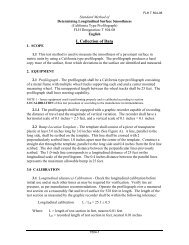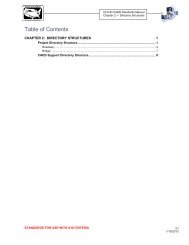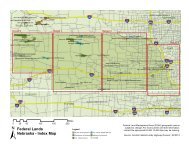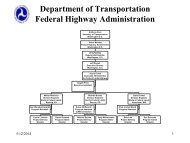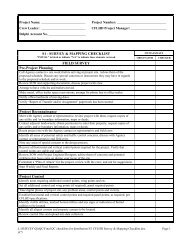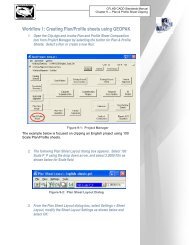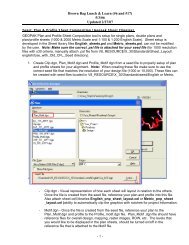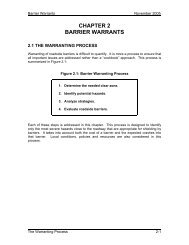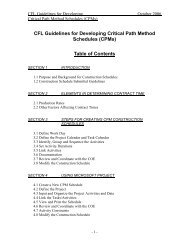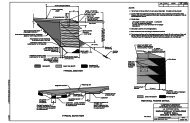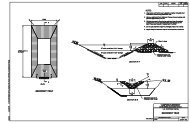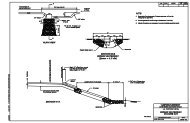An Orphaned Highway - Central Federal Lands Highway Division
An Orphaned Highway - Central Federal Lands Highway Division
An Orphaned Highway - Central Federal Lands Highway Division
- No tags were found...
You also want an ePaper? Increase the reach of your titles
YUMPU automatically turns print PDFs into web optimized ePapers that Google loves.
Maintenance Issues RaisedAlthough constructing the highwayprogressed rather smoothly, maintainingit became an entirely differentstory. Snowplowing and removingrockslide debris were immediateconcerns. In 1937, for example, ittook BPR road crews until June 19to clear the road of snow. The followingyear the road opened just afew days earlier, on June 10. Whowould continue such maintenanceover the long term—and who wouldpay for it—became topics of debatein the years following construction.The park approach act was creditedwith making construction ofthe Beartooth possible, but it alsocreated problems. Even though theact authorized NPS to contract formaintenance work, Congress did notprovide additional money for thatpurpose. So NPS urged the MontanaState <strong>Highway</strong> Commission to assumefull responsibility for maintenance,and even pushed legislationgiving Montana authority to maintainthe Wyoming section. NPS reasonedthat the road was a Montana approachto Yellowstone, was built atthe urging of the Montana congressionaldelegation, and connectedtwo Montana communities (RedLodge and Cooke City).Montana, however, argued thatmaintenance responsibility belongedto the <strong>Federal</strong> Government sincethe road was an approach to a nationalpark. In the end, the <strong>Federal</strong>Government agreed to do minimalmaintenance such as snowplowingand landslide clearing alongthe entire route except the final13.8-kilometer (8.6-mile) <strong>Federal</strong>-aidsection west of Red Lodge, whichhad always been cleared by MDTworkers. From 1938 to 1945, BPR,using NPS funds, oversaw the sectionmanaged under the park approachact. But in 1945, Congressenacted legislation giving NPS theauthority to plow and clear thehighway, and thereafter park servicecrews, using Forest Service funds,maintained the longer section.Three <strong>Orphaned</strong> SectionsIn the early years, Wyoming was neverexpected or formally asked to maintainits 56.3-kilometer (35-mile) sectionof the Beartooth, a bow-shapedsquiggle between the western andeastern ends of the roadway, whichThe narrow roadway width and lack of formal pullouts and parking areascreate dangerous situations when bicyclists, cars, recreational vehicles, andtour buses converge at the same location, such as at this spot heading westtoward Cooke City near Beartooth Butte. Plans call for better designed andmore appropriately located pullouts and parking areas.are both in Montana. (The Wyomingportion would later be designatedsegments 2, 3, and 4 during the modernreconstruction.) The highwayprovided little value to Wyomingbecause it had no connection to therest of that State’s highway system.Similarly, Montana never maintainedthe 13.5 kilometers (8.4 miles) fromthe park’s northeastern entranceeastward through Cooke City to theWyoming border (segment 1 duringreconstruction) because the roadwaywas never incorporated intoMontana’s highway system due to itsremoteness and proximity to the park.By the late 1950s, this NPSmaintainedsection of Montanaroad had fallen into disrepair andbecome a problem for the agencyto maintain. In 1959 NPS proposedturning the section and an “undeterminedstrip of land” adjacent to thehighway into a national parkway<strong>An</strong> excavator removes material from a cut section and dumps it into a truckduring the segment 1 rehabilitation. Republic Mountain is in the background.PUBLIC ROADS • July/August • 2006 21



